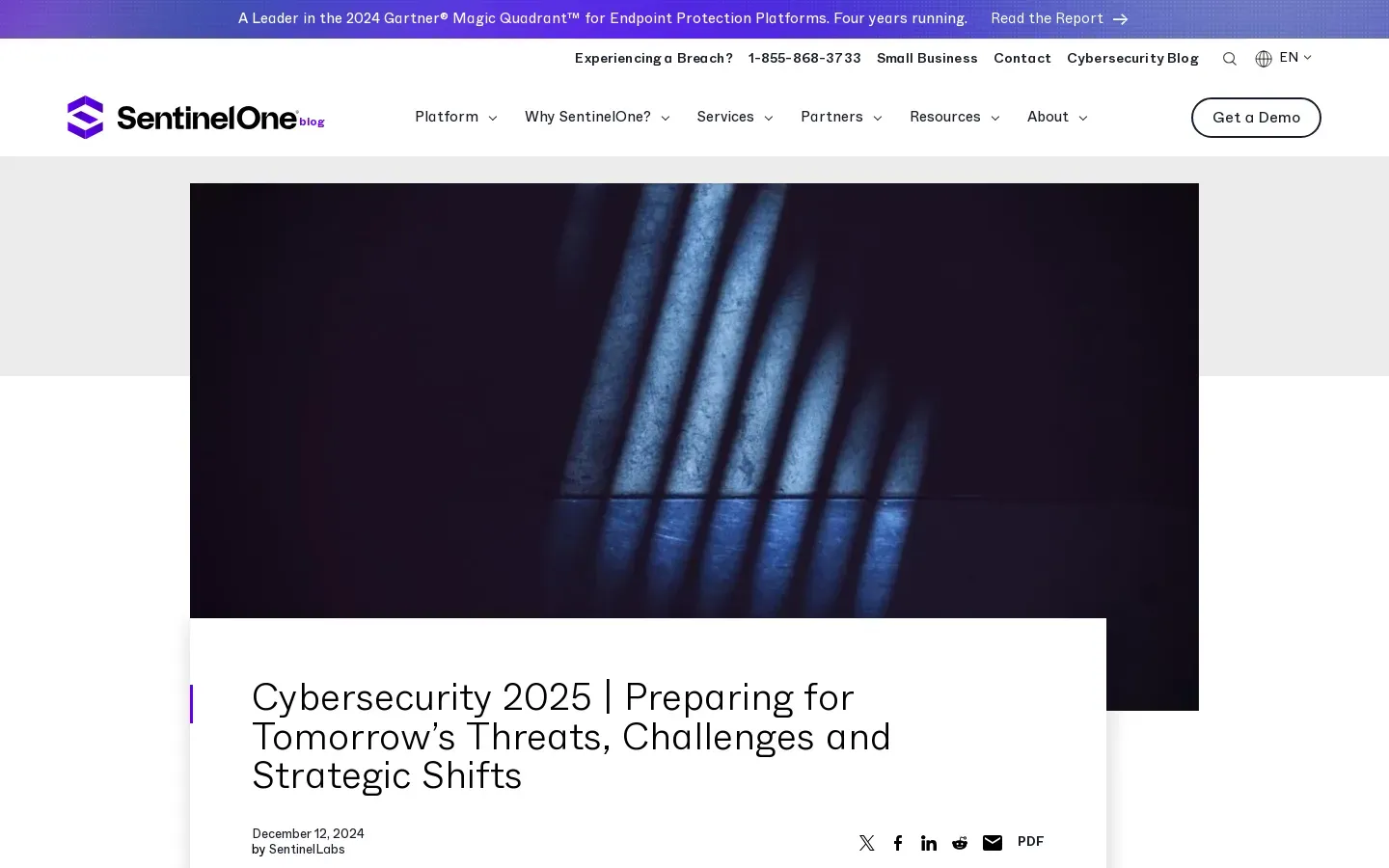
Cybersecurity Strategies for 2025: Addressing Emerging Threats
/ 3 min read
Quick take - As we approach 2025, the cybersecurity landscape is evolving due to increasing threats from organized cybercrime and nation-state actors, prompting a call for organizations to reassess their strategies and enhance collaboration, information sharing, and defenses against sophisticated cyber threats.
Fast Facts
- The cybersecurity landscape is evolving rapidly, with increasing threats from nation-state actors and organized cybercrime, necessitating a reassessment of current strategies.
- Ransomware and extortion tactics are on the rise, highlighting the need for organizations to adopt robust defense strategies against these persistent threats.
- Enhanced information sharing and collaboration among organizations are critical for building a resilient cybersecurity posture and addressing vulnerabilities in under-monitored technologies.
- The growing reliance on AI and cloud services makes organizations prime targets for cyberattacks, requiring heightened vigilance and improved monitoring tools.
- Future directions include developing regulatory frameworks to support proactive cybersecurity measures and fostering collaboration through enhanced information sharing platforms.
Cybersecurity Landscape 2025: Navigating Evolving Threats and Strategic Directions
As the year 2025 approaches, the cybersecurity landscape is witnessing profound changes driven by increasingly sophisticated threats. Recent research underscores the urgency for organizations to reassess their cybersecurity strategies, emphasizing collaboration and proactive measures to counteract these evolving challenges.
Current Landscape and Evolving Threats
The current cybersecurity environment demands a reevaluation of existing defenses in light of emerging threats. Ransomware has become a dominant concern, with extortion tactics now commonplace. This shift reflects a broader cultural change in cybercrime, where motivations and techniques are diversifying. The rise of organized and strategic cyber threats necessitates that organizations understand these developments beyond opportunistic attacks.
Methodology and Key Findings
The research employs a comprehensive approach, integrating expert insights, trend analysis, and strategic recommendations. It highlights the critical need for enhanced information sharing and collaboration among organizations to build a resilient cybersecurity posture. Key findings include:
-
Enhanced Information Sharing and Collaboration: Prioritizing collective security through improved communication and data sharing is essential.
-
Focus on Under-Monitored Technologies: Addressing vulnerabilities in lesser-monitored technologies is crucial as they are often exploited by cybercriminals.
-
Ransomware as a Persistent Threat: Robust defense strategies are necessary to mitigate the impact of ransomware.
-
Increased Targeting of AI and Cloud Services: With growing reliance on AI and cloud computing, these areas require heightened vigilance against cyberattacks.
Tools and Frameworks for Addressing Challenges
The research outlines several tools and frameworks that can aid in addressing cybersecurity challenges:
-
Threat Intelligence Sharing Platforms: These platforms enhance collective defense strategies by facilitating threat data exchange among organizations.
-
Enhanced Monitoring Tools for Edge Devices: Improved monitoring solutions are vital for protecting edge devices, which are frequently targeted.
-
Regulatory and Legal Frameworks for Information Sharing: Clear legal frameworks can encourage information sharing without fear of liability.
-
Ransomware Defense Strategies: A comprehensive approach to ransomware defense, encompassing preparation, response, and recovery measures, is critical for minimizing risks.
Implications for the Future
Looking forward, the research outlines several future directions for expanding cybersecurity efforts:
-
Enhanced Collaboration and Information Sharing Platforms: Developing robust platforms for information sharing is crucial to foster collaboration among organizations.
-
Focus on Under-Monitored Technologies: Conducting thorough risk assessments on technologies not currently under rigorous scrutiny is recommended.
-
Regulatory Frameworks for Cybersecurity: Collaborating with policymakers to create a supportive legal environment for proactive cybersecurity measures is necessary.
As we move into 2025, adopting a holistic and cooperative approach to cybersecurity becomes imperative. The evolving threat landscape requires concerted efforts to enhance defenses, leverage shared intelligence, and prepare for modern cybercrime complexities. By prioritizing collaboration and proactive strategies, organizations can better safeguard their assets and contribute to a more secure digital environment.



